#indigenous scripts
Text
Preserve the rich diversity of the world's languages and protect indigenous scripts.
The Missing Scripts program aims to preserve the rich diversity of the world's languages and protect indigenous scripts, ensuring their existence in the digital sphere.
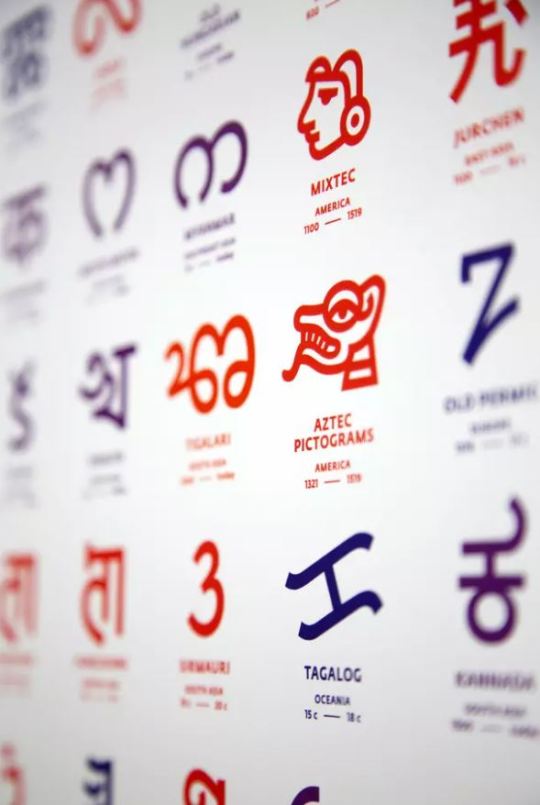
This initiative, launched as part of the International Decade of Indigenous Languages (IDIL 2022-2032), was presented at the UNESCO World Conference on Cultural and Arts Education (WCCAE) in February 2024 in Abu Dhabi, United Arab Emirates.
The Missing Scripts started from the alarming realization that nearly half of the world's writings remain absent from digital platforms. Among these are not only ancient scripts, some of which remain undeciphered, but also a large number of minority or Indigenous writings still in use today. Neglected by the digital industry, these writings, along with the languages they represent face the threat of extinction. How can we fix this situation? The initial step involves encoding these scripts, a process that entails standardizing them by assigning a numerical identifier to each symbol.
This crucial task has been carried out by the Universal Unicode Standard since the early 1990s. However, mere encoding is insufficient. Equally imperative is the development of input methods such as keyboards to ensure compatibility across various operating systems, as well as the creation of appropriate fonts. Designing these “digital fonts” requires specialized expertise, involving collaboration with experts, including linguists, developers and native speakers. This is the mission led by the Atelier national de recherche typographique (ANRT), housed in a public art school, to allow these writings to be accessible on computers and smartphones. This approach thus makes a strong case for an interdisciplinary artistic education that combines technology, art, culture and typography.
This is an essential issue of digital empowerment. Without proper encoding, not only is the publication or exchange of texts is impossible, but also the construction of vital datasets essential to current technologies, such as automatic translation, voice recognition, machine learning and AI becomes unattainable. It was therefore a natural progression for The Missing Scripts project to join hands with the International Decade of Indigenous Languages, to draw global attention to the plight faced by numerous Indigenous languages. The Global Action Plan for the International Decade of Indigenous Languages provides enabling conditions for digital empowerment, access to information and language technologies, and artistic creation in Indigenous languages. In this context, The Missing Scripts project fits seamlessly with the proposed outputs in the Global Action Plan, contributing to the goal of enhancing the practical use of Indigenous languages.
On 14 February 2024, the event “Digital Arts and Cultural Inclusion: Navigating the Intersection of Technology, Identity and Dialogue” took place alongside the thematic sessions of the the UNESCO World Conference on Cultural and Arts Education (WCCAE). The speakers presented various initiatives in artistic education and digital creation focused on intangible heritage. Among them, Thomas Huot-Marchand, Director of the ANRT, presented the International Decade of Indigenous Languages, and spotlighted the work of the ANRT, a laboratory of the National School of Art and Design of Nancy, France. Founded in 1985, the ANRT welcomes student researchers from all over the world every year. One of its flagship programs, The Missing Scripts, has been developed in partnership with the Script Encoding Initiative (University of California, Berkeley) and the University of Applied Sciences Mainz (Germany) since 2016.
From 13 to 15 February 2024, the UNESCO World Conference on Cultural and Arts Education was held at the National Exhibition Center in Abu Dhabi, United Arab Emirates. The event brought together nearly 1,000 culture and education stakeholders, including 90 ministers and 125 representatives from UNESCO's member states. At the closing of the conference, UNESCO Member States unanimously adopted a new Global Framework for Cultural and Arts Education. Notably, this framework prioritizes the enhanced promotion and preservation of Indigenous heritage and cultures.
Digital preservation of Indigenous languages: At the intersection of technology and culture
#Missing Scripts program#indigenous scripts#Digital sphere#unesco#Global Framework for Cultural and Arts Education#World Conference on Cultural and Arts Education#indigenous languages#Indigenous heritage and cultures#Digital preservation#Scripts
0 notes
Text

Back to cuneiform school
#red#Cuneiform#logos#graphic design#script#language#ethnic#Native American#Indigenous Americans#American Indians#precolumbian#art#drawings#red line
4 notes
·
View notes
Text
solemn vow to never be complacent or meek around things i feel strongly about again — to at least start the conversation even if i don’t have the words to talk back exactly to a poisonous idea — in kind, to pick up the thread if someone else does the same — tired of letting evil shit unfold —
#honestly this mostly only happens because of my disability which. i've been dreaming/reading about navigating that in ways feel better#or else because im scared of violence as a trans woman but i’m sick of fear of violence making me passive#rarely because i got scared in the crosshairs of financial insecurity and feared losing work#but that is what im parsing this time and very determined not to let that happen ever again#cuz like. having the supposed 'non-action' of passivity even available to you is a privilege of whiteness#in this case it was taking a creative-side gig on a play that felt very clear the playwright had given very little if any consideration#to nonwhite perspectives like clearly by a white person thinking about a white audience kinda liberal politics#and i took it bc my friend's mentor was directing and she put us in touch and spoke highly of him#and she's indigenous and very willing to call out white bullshit so i had some hope/trust that he would push it more#and he........ did at least cast a latino actor in the one role that would have made the play horrifically racist#if it had been cast as a white person but that felt like doing the absolute least to me#im still very much figuring this world out#understanding the ethics of theater work and im glad i did this in that regard#cuz like. i didn't fully realize that my only real chance to make a creative + ethical statement was right out the gate in accepting the gi#as an SM like... there's really no other chance to have an opinion so i should not take work if the script doesn't align w my ethics#and use that rejection as a chance to make it clear what's fucked up#...if i even ever SM again that was the most stressful gig i've ever done and i didn't even get paid for it. fuck#sorry for writing half the post in the tags. if ur reading this ur too close >O< jk haaiiii thx for reading my diary#very much a 'i am thinking through these concepts still and ur welcome to share ur thoughts on them' kinda post
2 notes
·
View notes
Text
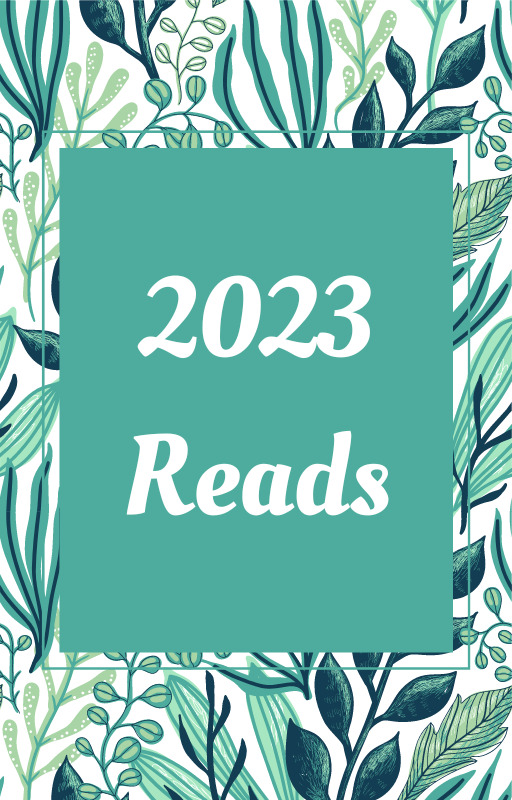
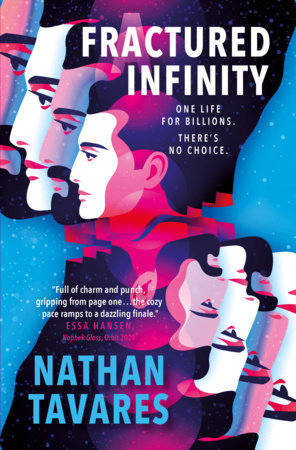
Adult science fiction standalone novel
In near-future America, struggling documentary filmmaker Hayes Figuerido learns that an alternate version of himself from a parallel universe created the Envisioner, a device that can predict the future, and sent it to his reality
When he joins a team of scientists studying the Envisioner, Hayes meets physicist Yusuf and learns the two of them are married in another universe and finds himself falling for Yusuf in this one
As Hayes learns more about the multiverse, however, it becomes clear that while their lives are inextricably linked, their story often ends in tragedy and saving Yusuf could risk the univerise
Explores multiverse theory and questions of how far you will go to save the one you love
Gay main character with depression; Egyptian, Muslim love interest; M/M romance; aromantic asexual Japanese side character
#ooh i read this one a while ago let me try to remember what i thought#i think the first third or so when they're just studying the envisioner and yusuf and hayes are falling in love is a bit slow#enjoyed the multiverse-hopping stuff#some of the filmmaker stuff like envisioning the world as a script got a little tedious#well fleshed-out protagonist who feels very realistic and flawed#also i liked yusuf#i have seen at least one review by an autistic reader saying they read him as autistic#the aroace representation felt a little questionable to me because the character in question is very cold/calculating?#didn't expect that there would be so much world-building around the near-future america setting which was interesting#like androids being common and also an indigenous sovereign state#also there's one world with a movie crew stuck on the moon that i thought was super interesting#the alternate realities are all cool#okay BIG SPOILERS NOW#i was kind of unconvinced by the ending#basically the main character is given the choice between saving yusuf's life and letting an asteroid destroy earth in another reality#he picks yusuf and it like 'now to compartmentalize my horrific guilt and live happily with him'#and i was like. bro. you are going to be eaten alive by guilt in a few years#i don't know i wasn't convinced by it!!#would love to hear thoughts from someone else who has also read this book tbh#a fractured infinity#nathan tavares#2023 reads#books#lulu reads a fractured infinity#lulu speaks#lulu reads
4 notes
·
View notes
Text
one moment im taking notes on the 8 symbols seen on the screen in the lor, now im reading an academic paper on the turaga indigenous movement
#i was like hey it would be cool if the lor script could be boustrophedon (script direction alternates every line) if expanded upon#bc of some official design choices like mirrored characters n stuff#I JUST WANTED TO KNOW HOW AVOIULI WAS SPELLED IN JAPANESE...#bc thats possibly one of the only living examples of boustrophedon#its really really cool.........#its used in the raga language of pentecost island of vanuatu (and some other languages)#which used to be only written with the latin alphabet#but thanks to the indigenous movement there is now avoiuli which is a writing system based on the traditional sand drawings#sphere.txt
0 notes
Text
Canada: Indigenous History
Of course there are Indigenous people in 'AveryCanadianFilm'! Any indigenous themes, characters, or related scenes, however, will be co-developed or co-written with Indigenous friends who are writers. Yes, they are authentically and verifiably Indigenous, no a DNA test is not required. :-)
This is what wiki says about Indigenous people:
0 notes
Text
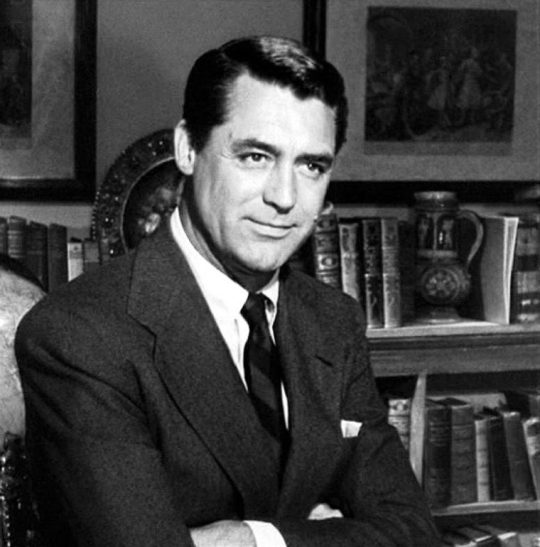

Propaganda
Cary Grant (The Philadelphia Story, His Girl Friday, Bringing Up Baby, Charade)—just the peak of old-school Hollywood sexuality. The glam, the suits, the gentle wit, the acrobatics, those eyes that always looked like they knew exactly what movie they were in and were laughing at the joke...
Vincent Price (Laura, Leave Her to Heaven, House on Haunted Hill, The Masque of the Red Death)—svelte, stylish, horrifying, beautiful, wickedly funny, camp and gorgeous and evil. he was an art connoisseur who advocated passionately indigenous art, he was an actual literal gourmet cook, he was so liberal he got greylisted during the mccarthy era for being too rad, he's my favorite muppets guest of all time
This is round 4 of the bracket. All other polls in this bracket can be found here. Please reblog with further support of your beloved hot sexy vintage man.
[additional propaganda submitted under the cut.]
Vincent Price propaganda:
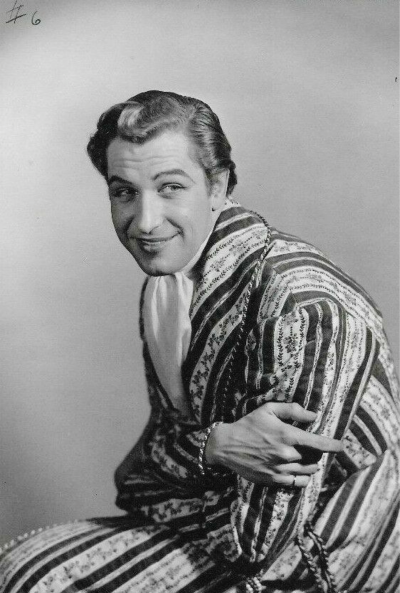
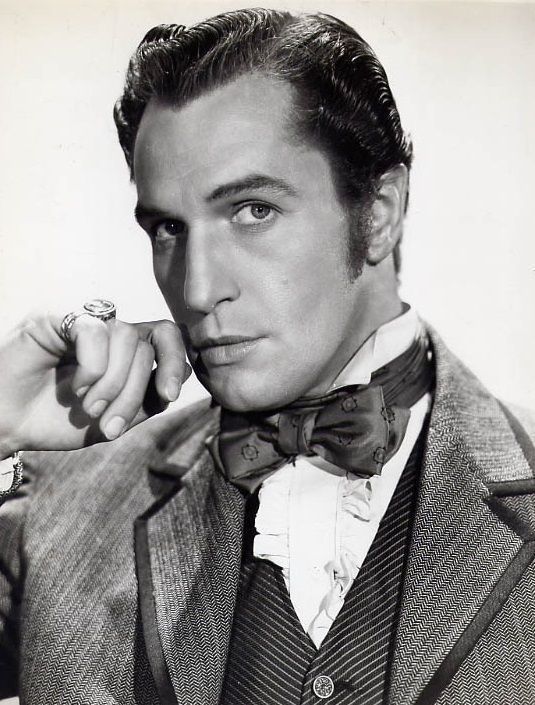
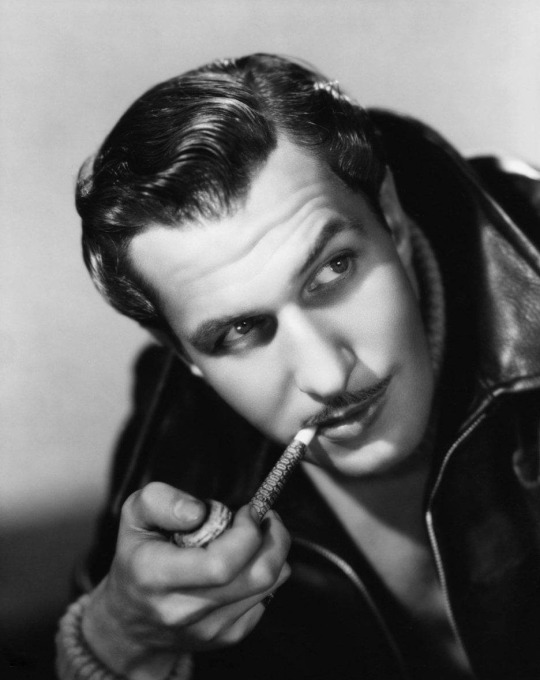
Submitted: this fancam
Submitted: this entire Tumblr page
Cary Grant propaganda:
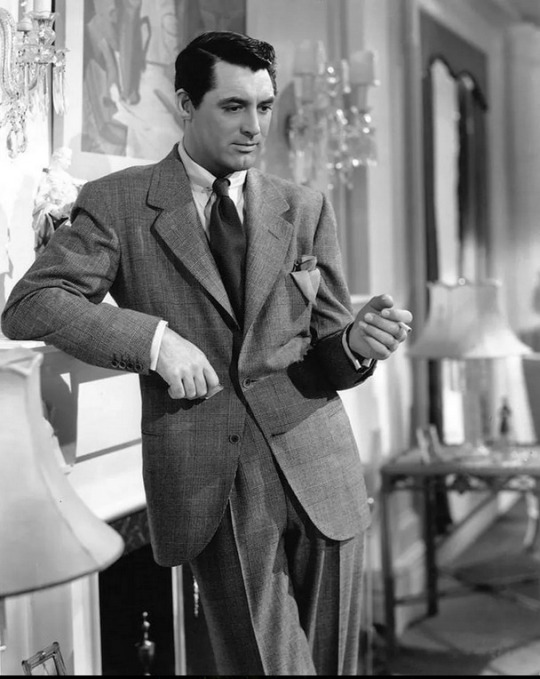
"My Golden Age of Hollywood professor, who was very outwardly gay himself, put it this way: Even though Grant's sexuality was kind of an open secret in Hollywood, the public couldn't know in any real way. But anybody could see that there was a queerness about him, so he was casted for roles where he physically embodies his masculinity in a non-explicit but queer way. Bringing Up Baby is famous for the scene where Grant wears a frilly robe (pictured below, but what people don't always realise is that he plays kind of an awkward nerd in that movie. He's a hot awkward scientist in a grand robe!!! Hot!!! In The Philadelphia Story, one of my famous movies of all time, he plays C. K. Dexter Haven, a rich, sarcastic, supposedly abusive guy. And yet, what we see is this laid back, dandy-ish figure, who absolutely does not feel threatened when a woman he supposedly loves (Katharine Hepburn) starts having feelings for, and hooks up with another guy (James Stewart). He lets a drunk Stewart into his office and helps him get his job back! Obviously that is the script and not the actor, but the whole film, and that scene in particular, shows him having this very queer attitude of openness toward Hepburn and Stewart, which is only amplified by the casting of Grant and his portrayal of the character. Anyway, this is not an essay arguing for The Philadelphia Story to be considered a queer film, all I will say is: he's super hot in it."
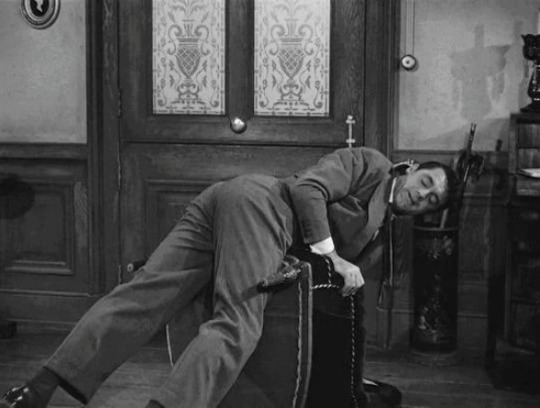
The link to the above mentioned frilly robe scene from Bringing Up Baby: "I just went gay all of a sudden!"

last minute cary grant propaganda: the last few paragraphs of that new vanity fair article about him and randolph scott that just came out 2 days ago on cary's birthday where he calls it "gravity collapse" and "love at first sight" and says their souls touched and and and i'm actually sharing this mostly because it makes me emotional but also because a vote for archibald is a vote for love. this is my message. apologies for sounding mildly insane.

2K notes
·
View notes
Text
on the topic of leguizamo & my overall appreciation for him as an entertainer. it sucks that the spawn movie was so bad because my god he really tried his best in it. in THEORY john leguizamo + violator is an EXCELLENT combo and yet...
#to his credit he was really funny at times in the movie#the script was just outrageously bad#to the point where even he couldn't save it#i honour him by headcanoning vi as a half indigenous colombian man i think he'd appreciate that#sid speaks#spawnposting
1 note
·
View note
Text
ALTA Live Action Season 1 Initial Thoughts (Spoilers)
I just finished the season, and holy shit!
Quick things that need to be addressed/debunked:
“Sokka is no longer sexist”
I dont know what people were talking about when they talked about Sokka’s “sexism” being removed. It’s still there! But not in the overly exaggerated comical way it was in the original.
In fact, it’s more in line with ancient practices of indigenous tribes where men are seen as protectors and providers while women are expected to nurture. It’s not the same “boys are better than girls” narrative in the original.
Additionally, Suki still beats the fuck out of Sokka and humbled him really quick. They’re super cute by the way. And I love Suki’s “I like my men a little stupid” vibe. She’s great.
“Aang doesn’t run away like the original!”
That is not true. He does run away, but not because he’s trying to get away from the temple but instead to get some air because he feels overwhelmed. He’s more like taking a quick break and planning to come back. It’s not exactly the same, but almost. It also is done in a way where his guilt feels more justified.
“Katara doesn’t talk about her mom anymore like the original”
This is true… BECAUSE THEY SHOW INSTEAD OF TELL. I was honestly not prepared to see the death Kya in such graphic detail and how Katara was in the room hiding when it happened. It’s honestly really sad and more heartbreaking.
Plot:
The timeline seems to be ambiguous compared to the original series where it was “end of current year.” In fact, they repeat “three years” a few times, which makes me think if the series get greenlit for more seasons, it would be over a three year period.
Jet is still villainized but given more nuance and not a simple "good v bad" way like the original.
Zuko’s story about how he got his scar has additional lore that makes him come across as even more selfless and compassionate. The additional context of the platoon he advocated for in the war meeting, becoming his current crew, really added to the story.
Eradicated the nepotism baby plot point with Pakku only training Katara when he finds out he used to date her grandma. Instead, Katara proves herself and ends up teaching the other male fighters the techniques she learned from watching other benders use their elements and mimics them.
This season doesn’t have Aang learning any waterbending, but rather facing his trauma and the consequences of his actions. He get roasted by all his past lives. Which is an interesting choice, but I think it works well in how they executed it.
This season seems to actually be Katara focused and her journey of learning waterbending which I honestly loved because it really hits home the element of “water” being the story of an untrained waterbender learning her element. But, I do think Aang could’ve learned a little bending. It felt a little off.
Katara ends up advocating for all waterbending women and ends up leading an army of both men and women during the siege. She’s really bad ass and is given the title of master without being formally trained by Pakku. She made herself a master.
I think the timeline is a little wonky because of how much they had to fit in with the limited episodes they had.
Kuruk is given respect! I loved that.
June actually seems into Iroh which I thought was a funny but cool way to flip the script from the original.
The relationship between Zuko and Iroh is really beautifully executed. I love the depth they added with flashback scenes and their bond prior to the Agni Kai. It also wasn’t as frustrating watching Iroh and Zuko’s dynamic because Iroh communicated with Zuko in a way he could understand with straight answers rather than seeming to actively sabotage him with cryptic puns and shenanigans like the original.
They changed the love triangle with Yue Hahn and Sokka to be very healthy. They gave Yue autonomy and a choice in her relationship- which- again- is much more in line with indigenous cultures. Also, Hahn and Sokka’s relationship is really supportive and full of respect and no ill will.
They way they handled grief and the realities of war with the loss of life was very well done and really drove home the point that this is a war and these are child soldiers.
There’s a lot more but these are my initial thoughts. Will probably post more later.
Shipping:
Kataang is all but removed. Literally DOA. There is no indication of a crust on either side. It’s painted like a sibling relationship, which is like the original, but this time everyone seems to be on the same page. But, I swear the writers had to have read ZK fics because damn.
They canonized a popular Zutara theory/hc about the cave of two lovers and how the crystals would light up once it went completely dark instead of a “kiss” activating the crystal glow.
Speaking of the Cave of two lovers. They keep the Oma and Shu story with red and blue coloring. Making it come across more as foreshadowing than a direct link to the present tunnel story.
Sokka is put in Aang’s place with Katara in the tunnels and turned it into a story about the love of family and sibling bonds. Aang wasn’t even present.
Zuko and Katara share a meaningful look when they first see each other and continue to have a Katara centric scene followed by a Zuko centric scene and vice versa.
The scarf scene. I will not be elaborating further. If you know, you know.
Zuko and Katara fight scene in the North is epic. He still taunts her with almost the exact same dialogue but it’s so sassy- I love the banter.
Suki and Sokka were really cute and the actors had great chemistry. I think Yue and Sokka was really rushed and didn’t really feel anything about them, honestly. But I attribute that to lack of episodes to develop all that plot.
488 notes
·
View notes
Text
I need english speakers who call Irish, or Gaelic script complicated or incomprehensible to take a long and hard look at the fact that there isn’t a single vowel in english that isn’t context dependent and letter combinations work in ways that allow “tion” to make a “shen” sound. English is full of arbitrary bullshit and learning spelling means you spend a week learning the alphabet and where many other languages would be done, now you gotta learn every fucking individual word until you pick out some of the recurring combination sounds only to find all the words that still work unintuitively because nothing actually makes sense.
Ya’ll have the gull to make fun of indigenous languages being wiped out by the english, while having one of the most fucked up languages to actually learn how to write and read.
2K notes
·
View notes
Text
As Indigenous woman filmmakers, we knew that our path through the industry would be narrow and that our film, Fancy Dance, would have a small window for success based on the abysmal record of representation for Indigenous folx in Hollywood. As such, we channeled our collective wills as granddaughters of Dust Bowl survivors, descendants of genocide and avowed followers of the indomitable Merata Mita to give this film the best shot possible.
If there existed a “how to make a successful movie in Hollywood” checklist, we followed it to a tee.
Step one: Create a compelling script (after her sister’s disappearance, a hustler kidnaps her niece from the child’s white grandparents and takes her to the state powwow in hopes of keeping what’s left of her family intact) – check.
Step two: Find top-tier producing partners (Nina Yang Bongiovi, Tommy Oliver) – check.
Step three: Cast amazing actors at the top of their field (soon-to-be Oscar nominee Lily Gladstone) – check.
Step four: Premiere and screen at world-renowned festivals (Sundance, SXSW, BFI London) – check.
Step five: Receive excellent reviews (THR called it “exceptional”) and festival prizes (Hamptons, L.A. Outfest, Mill Valley, NewFest, Sun Valley, Tacoma) – check.
Step six: Get a distribution deal – …crickets.
#i am SOOOOO glad someone let erica write about this because it is the most fucked up thing i've seen ALL YEAR#one of the best films of the year and after all the KOTFM love (ugh) this gets CRICKETS? NOTHING? fuck y'all
522 notes
·
View notes
Note
How is the cult from Midsommer white supremacist? Because they are swedish and borrow from paganism? The nazis appropriated Norse culture, they even misused different runes and symbols, and Scandinavia is one of the most tolerant regions in Europe.
There's Nazi imagery throughout the film, & the fact that all the poc die first is no mistake. Ari Aster himself has said that the Harga are White Supremacists:
Defying an outdated horror trope, Aster does not kill off Josh (William Jackson Harper) — the only black character for miles — first. As Aster points out, though, the Hårga are racist, a callback to “a part of Swedish history and European history,” and all of the “outsiders” or “new blood” recruited for mating are purposely white.
“He’s thrown away in a way that the other members of the main cast are not," Aster notes. “And that is because these people have no further use for him.”
The Harga, when not inbreeding with each other, go out and groom new members to either 1. Be sacrified or 2. Introduce new genes by manipulating people into the cult or drugging & raping them (what they did to Dani & Christian), & they ONLY pick white people for this. There are no nonwhite Harga & that's not an accident.
The script also makes it crystal clear that the nonwhite couple were specifically chosen (bc they are not white) & brought there to be sacrificed & were never going to live. The member that brought the nonwhite couple displays hatred & malice towards them when they're not looking, but doesn't do this with the other white outsiders

(Ingemar is the Harga that brought Connie & Simon, the nonwhite couple). Connie & Simon didn't do anything wrong, they didn't do anything outright to insult the Harga. The only thing they did was be shocked about seeing the ritual suicide & express desire to leave (and they weren't the only ones who did this, Dani also did). And yet they were some of the first to die.
Even the visuals-- the Harga wear all White, it's always in blinding daylight. Whiteness is a GLARING theme. There's also foreshadowing early on in the film, where a book titled "The secret Nazi language of the Uthark" featured in Christian's room just before they go to Sweden.
There's also other Nazi ideology present within the Harga, such as the strict gender roles (the women all wear dresses & cook & clean & care for the children together but the men butcher the bear together), eugenics & ableism (the elderly are killed off at a certain age because they see disability & needing to be cared for as an elder "shameful", which is what one Harga states at the ritual suicide scene, & of course killing off the nonwhite characters), the "return to tradition" ideology (there are NO modern technology in the community, & it's in the countryside).
You see a cult full of ONLY White people, using Norse paganism (something VERY popular with Nazis) in an isolated area, who routinely murder poc, don't intermix with poc, kill off their elderly, Dani (the blonde, light eyed white girl) is praised for her beauty & made their May queen by the Harga, with strict gender roles, & this film was made by a JEWISH MAN to show the Harga as the bad guys, & you don't have a hunch that the Harga are maybe supposed to be white supremacists/nazis? That doesn't raise any red flags for you?
& let's not forget how Scandanavia committed genocide against the Saami, the Indigenous population who were there for hundreds of years before anyone else. That's a little off topic, but as a First Nations Canadian I aint gunna let that just go unacknowledged. Scandanavia has a white supremacy problem too, & Ari Aster is right for pointing it out
#I've talked to other poc about this film & me & other ppl snuffed out that this movie would be about a nazi cult just from the trailer#nazi tw#being Scandanavian & being into paganism doesn't make you a white supremacist no.#but the film makes it obvious through the other clues that that's not what's going on here#anonymous#rape mention#cult tw#nazism tw
2K notes
·
View notes
Text
FREE PALESTINE MASTERPOST
Trying to keep this blog more art- and creativity-focused in general, so I'll be removing the Gaza-related reblogs that are about a month old. But I'll use this post as a permanent archive that will update periodically (some of this information will grow dated as the situation develops, but I think it's important to keep a record of just how fiercely opposed people were to Israel's actions from this moment forward). We should all continue to raise our voices about this, and refuse to support politicians who enable genocide. Remember, they work for us, not the other way around. Keep going.
October 2023
-Donation links
-Social media links
-US congress ceasefire script
-Decolonizepalestine.com (information, mythbusting)
-More donation links
-Ways to pressure politicians for a ceasefire
-HUGE resource list
-"Is there anything I can do to help Palestinians besides call my representatives and beg them to stop killing people?"
-"We are isolated now"
-Palestine and landback
-210 PAGES of dead people's names.
-Bail money for Palestine Action
-Article list
-US action items
-Boycott info
-Grand Central Station shut down by protestors
-Message to white American citizens
-UK ceasefire petition
-How YOU can help Palestine (regularly updated!)
-"Please try amidst all this fury and grief to still have faith in the common people." (+donation links)
-Reminder about protest etiquette and privacy
-Prints for Palestine
-"We have no communication with the outside world. They are using their military might to harm us. We have no power but the power of God, no one but God. Please, pray for us." (spoken over mosque speakers)
-DAILY donate button + more donation links
-"Doesn't Israel have a right to exist too?"
-Script for US Congress calls
-Queerness under apartheid
-Sudan is also at war
-Hundreds of thousands of protestors in London
-Half a million.
-Tips for folks with phone anxiety
-This comic got real
-European and Canadian ceasefire scripts
-"The people of Gaza see the protests. That is reason enough to come even if nothing else." WE HAVE NOT FORGOTTEN YOU. WE ARE HERE.
November 2023
-More genocides than just Palestine
-How to buy e-sims to circumvent Gaza's internet blackout
-"Occupying territories is illegal. Resistance to occupying forces is legal."
-MASSIVE resource list
-"For decades now the media has told us Muslim men are savages, terrorists, wife beaters and everything in between. I want you to challenge this trope the next time you see it in the media. Let these photos serve as a reminder."
-"Don't stop talking about the Palestinian genocide. IT'S WORKING."
-UN resignation letter
-Israel won't allow Irish or Brazilian citizens to leave Gaza
-"Palestine must never be forgotten. Promise me that." (from the documentary "Children of Shatila")
-Gifs of pro-Palestine rallies around the world
-Support Palestine's last kufiya factory
-Protestors flood the streets in Washington DC
-Explanation of why calling representatives is a numbers game
-FREE ebooks on the history of this conflict
-Petition to screen films by Palestinian directors
-Call to boycott Gal Godot's work
-Indigenous activists block weapons shipment to Israel
-If you're attending a protest, DON'T TELL YOUR GOVERNMENT SHIT. Y'know, friendly advice.
-Links to support Palestine Action and Palestine Legal. Get in the way.
-Parallels between Israel and the surveillance tactics used by NYC mayor Eric Adams
-Don't spiral into doomerism. Persevere.
-Want a different strategy to contact your representatives? Try faxing them!
-Florida rep Michelle Salzman calls for the death of all Palestinians
-"The phone doesn't stop" :)
-Indian trade unions call on the government to scrap deals with Israel
-An overview of Israel's human rights violations, and two major political groups that have exacerbated Zionism in the US
-Israeli man explains why he's protesting
-"Whoever stays until the end will tell the story. We did what we could. Remember us."
-US House of Representatives votes to send billions of dollars worth of weapons to Israel
-Canadian email campaign and petitions
-"Canada's First Nation standing with Palestine"
-"Freedom is infectious as it is just and no one is free until they ALL are."
-Israeli forces invade al-Shia hospital
-Leaked list of weapons the US has sent to Israel
-Only 32% of Americans believe the US should support Israel
-Cop City action demonstrates how to protest effectively
-Refugee grandmother "doesn't have to imagine a multicultural and integrated Palestine- she remembers it".
-Protestors block the Bay Bridge in San Francisco (plus bail fund)
-Israeli forces attack schools in northern Gaza. SCHOOLS.
-Journalist shares an update from an Indonesian hospital and pleads for others to spread it around as it "may be the last video we are able to send"
-Scottish Parliament votes overwhelmingly to demand a ceasefire
-Sobering texts from a friend providing humanitarian aid in Gaza. "They have been distributing guns to the civilian settlers and allowing them into the West Bank to terrorize people" "We have been given option to leave. None took it"
-"the absolute bare minimum in this situation is 1) a complete ceasefire and immediate humanitarian aid in Gaza, 2) complete halt of all military foreign aid to the Israeli government, 3) the Israeli government being prosecuted for its war crimes in the International Criminal Court, and 4) land back and reparations for the Palestinian people. free Palestine means free Palestine, not just temporarily stop carpet bombing Palestine."
-"It's important that you keep posting and speaking about the ongoing genocide. This 5 day agreement isn't the end of things."
-Boosting the incredible, FREE daily donate button again
-Protests at the Macy's Thanksgiving Day Parade
-"REMINDER THAT ANTISEMITES AREN'T WELCOME HERE AND WON'T BE TOLERATED"
324 notes
·
View notes
Text
Josué Maychi on teaching Maya to the Wakanda Forever cast and a word play in one of Namor's lines.
The actor told us about a word play that only Maya speakers can understand.
---spoiler ahead---
“There is a phrase that Namor says that I had to translate that goes: 'Máansa'ab u nej miis tin wich' which in Spanish literally means 'They passed the cat's tail in front of my face with the hope of an alliance'. If you see cats, jaguars or panthers wag their tails when they go hunting because it is a way of hypnotizing their prey, so that image is what happened to Namor, that someone did that to him with their tail. I proposed it to the director and he loved it, because it refers to the panther that warned Namor, ” he said.
Josué Maychi told us that in English the phrase was translated as: "I was blinded with the hope of an alliance", which in Maya metaphorically means that someone was deceived, since in Spanish or English it is not literal.
Compillation of Namor's lines in Yucatec Mayan
In the interview for Cultura Colectiva, Josué Maychi, who plays the shaman in Black Panther : Wakanda Forever, spoke about his experience in the film in which at the same time, he collaborated as the Yucatec Maya coach for Mabel Cadena and Tenoch Huerta, every day for a period of seven months.
“No one knew anything about Maya and my first approach with the actors was to ask them if they could pronounce the consonants and sounds that do not exist in Spanish, English or other languages, and I was very happy to discover that they could pronounce them” he commented.
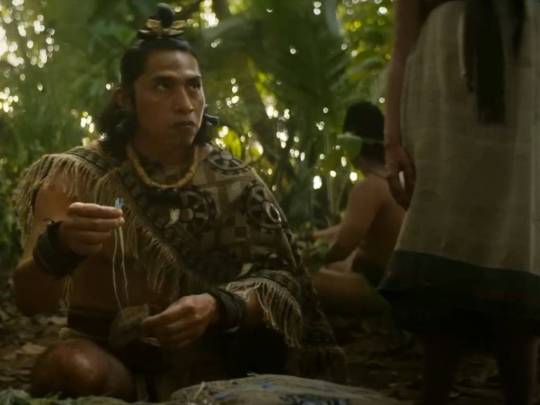
How was the process of teaching Maya? “We had sessions by Zoom and then in Atlantla we had scheduled meetings because I needed to listen to them. The first thing I taught them was the sound of the words, because in Maya there are five types of vowels that have to do with time, and if if they prolongued (a vowel) it can mean one thing or another. I asked them to imagine their lines as a melody and also gave them recorded audios to listen to, read and even write. For example, Mabel created her own way of writing, she created her own writing to have a personal approach to the language, ” he said.

Do you remember any funny anecdote? “There is a phrase that we say in the film that is Líik’ik Talokan, (there's Wakanda Forever) which is said by the people of Wakanda. Once, Álex Livinalli wrote to me and asked what we could say for the world we were creating, about the new universe and in Maya. I thought about it and thought it might be that phrase, which means something like 'Long live Talokan' or 'Rise Talokan'. I proposed it to them, they proposed it to the production, they loved it and it was integrated into the script, ” he said.
Finally, the actor pointed out that the representation of indigenous languages IS very important to him and mentioned that there are Mayan people who have proudly written him messages of gratitude, since they understood what they saw on the big screen.
#wakanda forever#black panther#talokan#talokanil#josue maychi#yucatec mayan#mayan#language#interview#namor#namora#attuma#marvel#mcu#spoiler#spoilers#tenoch huerta#mabel cadena#alex livinalli
3K notes
·
View notes
Text
Being Nonspeaking and Indigenous
One thing that I have struggled with most of my life is feeling like I don't belong to the communities I am a part of, because I cannot verbally speak my language(s).
I am a Sámi and Inupiaq person who grew up with both my cultures being a big part of my life. In Sámi culture, one of the biggest things that connects you to your community is being able to speak the language. I can still understand both spoken Northern Sámi and Inupiaq fluently, but I cannot speak out loud, and I can only use Swedish and English on my AAC.
My spelling is pretty bad in Northern Sámi. I can only write Inupiaq semi-well, and I can only write it in qaliujaaqpait (Latin script). This leaves me feeling like I'm not "Sámi enough" or "Inupiaq enough" to use those labels for myself.
Many people in both my communities understand this, and have been very kind and understanding. There are many reasons that someone can't speak the language of their community, and disability is just one of them.
Just my thoughts today.
#actually autistic#autism#high support needs#nonspeaking#indigenous#indigenous peoples#landback#nonspeaking and poc#poc#bipoc#saami#inupiaq#nothing about us without us
659 notes
·
View notes
Text
While this article does not answer my #1 burning question of how you dismount from a speeding sandworm, there are a lot of great pull quotes, including:
On Paul and Chani:
"...I wanted to make sure the audience will understand that Paul becomes a dark figure, that his choices are exactly what Chani was afraid of. He becomes the colonizers the Fremen were fighting against.... He betrayed her in many ways. But the big thing for Chani is that it’s not about love. It’s about the fact that he becomes the figure that will keep the Fremen in their mental jail. A leader that is not there to free the Fremen, but to control them."
On the duel between Paul and Feyd-Rautha:
"...we approached their fight at the end like some kind of symbolic union. The way their bodies get close to one another, there’s something animalistic, an intimacy, I was looking for."
On the infamous popcorn bucket:
"I’m at peace with the bucket."
Full article text under the cut, including Fremen sex lives, murder toddler adaptation choices, and the teeny tiniest of teasers for Dune Messiah:
Denis Villeneuve Answers All Your Questions About ‘Dune: Part Two’
He explains why Lady Jessica’s face is so heavily tattooed, whether Paul considers himself the Messiah and what he thinks of those Javier Bardem memes.
By Amy Nicholson
April 17, 2024
This weekend, “Dune: Part Two” muscles back into IMAX theaters with the verve of Timothée Chalamet rodeo-riding a giant sandworm. After nearly two months in theaters, the film is the current champion of this year’s box office race, with a total take of more than $680 million. (It’s also available to rent or buy on some streaming platforms.) The film’s success is thanks in part to audiences that have returned over and over to get lost in the rocky warrens and spiritual reckonings of the planet Arrakis. One admirer reports he’s seen the movie 25 times to date.
That there’s so much to explore in “Dune: Part Two” is a credit to its writer and director, Denis Villeneuve, who boldly reshaped Frank Herbert’s complex and cerebral 1965 novel “Dune.” Villeneuve split the book and its themes into two films: “Dune: Part One,” released in 2021, focused on the political struggles between two families, the Atreides and the Harkonnens. “Part Two” delves into religious fervor as the two surviving Atreides, young Paul (Chalamet) and his mother, Lady Jessica (Rebecca Ferguson), ingratiate themselves with Arrakis’s Indigenous desert tribe, the Fremen, by allowing the locals to believe that Paul is their Messiah — a prophecy that, if it comes to pass, will mean the slaughter of billions of victims across the galaxy.
Villeneuve has yearned to tell this story since he was a teenager in Quebec. His devotion is palpable; every frame feels steeped in monkish contemplation. Yet, he’s also a visual dramatist who doesn’t want audiences to get tripped up by too much exposition. His scripts give only passing mention to core concepts like spice, a psychedelic dust that powers everything from space travel to Paul’s clairvoyant hallucinations.
Though Villeneuve doesn’t want to overexplain, he was willing to provide some answers in an interview via video where every question about the film — even silly questions! — was on the table.
Does Chalamet’s Paul Atreides actually believe he’s the Messiah? What’s the meaning of Jessica’s face tattoos? Villeneuve also got into the erotic lives of his desert dwellers and the extra narrative weight he threw behind Paul’s Fremen love interest, Chani, played by Zendaya. As Villeneuve said with a grin, “Chani is my secret weapon.”
Here are edited excerpts from our conversation.
The last time we spoke, you weren’t sure what to make of the sandworm-shaped “Dune” popcorn bucket. It went on to be so popular that it sold out in cities before opening day and is being resold online for around $175. What do you think of it now?
I thought that the bucket was an insane marketing idea. I laughed so much. It is so out there. I don’t know who designed it, but they’re a bit of a genius. I’m at peace with the bucket.
In this film, Javier Bardem’s character Stilgar is reduced to a guileless follower of Paul Atreides, who Stilgar believes is the new Messiah. His conversion is tragic. But also, Bardem’s awe-face has become a funny meme, and the second time I saw the movie, people laughed at almost every line he spoke. Did that reaction surprise you?
No. I am very happy when you say that he is a tragic figure. For me, he is the most tragic figure of all. The idea to bring humor to Stilgar was to make him lovable, to feel the humanity in that character. He’s not an austere figure, he has a big heart. But his beliefs, his faith, his reactions bring humor — and that is something I love about making a sci-fi film, because I can talk about that without offending people because it’s a fake religion. I designed all the prayers myself, so I know it’s fake. I find Stilgar very funny. And when people laugh, I’m happy because that was the intention.
Someone makes a dig that Stilgar has found a savior again. This is not even his first time?
All his life he has been raised with that dream. So I suggest that every time a guy comes from outside with a lot of charisma, he hopes he’s found him. Like in the Bible, we have tons of prophets before Jesus came.
The arc of “Dune: Part Two” is Paul accepting that he must become the Messiah — and get billions of people killed. Does he truly believe that he is the Messiah? Or does he just decide to let the Fremen believe that he is?
I don’t think he believes that he is the Messiah. I think he feels the burden of the heritage that the Bene Gesserit [the mystical sisterhood that Jessica belongs to] have laid among the Fremen, and he sees the potential to use that religious power to survive.
Paul is warned that no man can survive drinking the spiritual water of life. But as that’s part of the lore of a planet seeded with manipulative propaganda by his own mother, I have to ask: Have other men actually been drinking the water and dying? Have they been scared off from trying? Is the warning just a setup for a magic trick?
There are people that have tried it in the past and died. In Frank Herbert’s world, femininity is a power. I think Herbert was fascinated by motherhood, by the power of creation. I love this idea that the power is held by women. It’s something that was ahead of his time when he wrote it and I tried to put the focus on it.
You say so much with Jessica’s costuming. In the first film, her look is immaculate and baroque. This film begins with her in rags, but she finds another path to being dressed and treated like royalty. And she gets a lot of tattoos on her face. Why did she get so many more face tattoos than the outgoing reverend mother?
She’s trying to play on the symbolism that was put in the prophecy. She’s supposed to be the mother of the Messiah, so I wanted to bring the idea that she was like the pope of the reverend mothers on Arrakis. There’s some kind of madness in writing elements of the prophecies on her face. Frankly, I think when you drink the worm poison, it affects your sanity — and the same with Paul. I like the idea that we feel she’s going too far.
Jessica is already pregnant when the first movie ends, and she’s still pregnant at the end of this film. Which means you had to condense this massive story into less than nine months because her body is a time clock.
The idea was to compress the book so that Paul will feel the pressure to get the Fremens’ trust, to start gearing up — but not to succeed, not to have the time to create a real war. Time is against him.
Because in the book, this takes years. Long enough for Jessica to give birth to a very unnerving daughter, Alia. We glimpse Alia as an adult — she’s played by Anya Taylor-Joy — but you skipped over seeing her murder people as a toddler. Was it hard to decide no “murder toddler”?
I think pregnant women look tremendously powerful. To use that power was very exciting. And usually when you see a pregnant woman onscreen, she’s always giving birth. To avoid that moment, to stay in the state of being pregnant, I thought was very Frank Herbert-like. I was going away from the killer toddler, but I thought that was more fresh and original. Honestly, it’s one of the things that I’m proudest of in the adaptation.
Speaking of female power, let’s talk about Chani.
Chani is my secret weapon. Frank Herbert was sad to realize that people saw the book as a celebration of Paul Atreides. He wanted to do a cautionary tale against messianic figures, a warning against blending religion and politics. I wrote the second movie trying to be more faithful to Frank Herbert’s intentions than to the book. In the book, Chani is just a follower. I came up with the idea of her being reluctant. She gives us the critical distance and perspective on Paul’s journey. I wanted to make sure the audience will understand that Paul becomes a dark figure, that his choices are exactly what Chani was afraid of. He becomes the colonizers the Fremen were fighting against. And then the movie becomes the cautionary tale Frank Herbert was wishing for.
Paul makes a choice at the end that will go on to kill billions of people. That’s so large and theoretical that it’s hard to grasp. But you structure your climax so that in that moment of betrayal, he’s also betraying the love of his life — a betrayal we understand.
He betrayed her in many ways. But the big thing for Chani is that it’s not about love. It’s about the fact that he becomes the figure that will keep the Fremen in their mental jail. A leader that is not there to free the Fremen, but to control them. That’s the tragedy of all tragedies. Like the Michael Corleone of sci-fi, he becomes what he wanted to avoid. And he will try to find a way to save his soul in the third part.
But “Dune Messiah,” the book your third film is based on, picks up 12 years later with a reunited Paul and Chani. How far did you feel you could push her anger? Because at some point, she’s going to have to forgive him.
That anger is tremendous. I don’t want to reveal what I’m going to do with the third movie. I know exactly what to do. I’m writing it right now. But there’s a lot of firepower there and I’m very excited about that decision.
In the spirit of no dumb questions, Chani says that Paul sand-walks like a drunk lizard. Which means Arrakis has booze?
Actually, there is spice beer. In the book, there are Fremen parties, even some orgies involving spice. I didn’t bring that into the movies because it’s PG-13.
Body fluids have significance to the Fremen. Spitting is the giving of water, a sign of respect. But tears and vomit are a waste. So what is kissing?
As long as you don’t lose your humidity, you can kiss. It’s an exchange of fluids — an act of love, when you think about it. Fremens love to kiss.
What about the, um, other romantic fluids?
You cannot have sex outside, for sure. But they are very sexual. I suspect that all sexual intercourse happens in environments that are protected from losing moisture. When they are in their sietches [or caves] underground, those are sealed. You don’t need to wear stillsuits inside them. We can deduce from that there is no problem to have sex in a sietch.
By the way, who decided that Fremen was pronounced Freh-men and not Free-men?
All the pronunciations, I took them from recordings of Frank Herbert’s voice. Frank Herbert used “Freh-men,” which I love. It makes it less on-the-nose.
You kept two major characters out of the first movie and only introduced them now: the princess Irulan, played by Florence Pugh, and the Baron Harkonnen’s nephew Feyd-Rautha, played by Austin Butler. The princess is the first voice in the books, the first face onscreen in David Lynch’s “Dune” [1984]. What made you sure holding them back was the right move, despite three years of fans asking, “Hey, where are they?”
When people ask me what was the biggest challenge in making those movies, it’s writing them. In order to make this adaptation, we have to make big, bold decisions. One was that the first movie should be seen from Paul’s perspective. I wasn’t able to do that entirely because I had to go to the Harkonnens’ side to introduce them so that the story will be clear, but I tried to find an elegant simplicity in the story structure. And I wanted, frankly, to keep some firepower for the second movie.
Why is Feyd-Rautha’s gladiator scene in black and white? And what are the splats in the sky above the dome?
Frank Herbert explores the impact of ecosystems on cultures, on humans. How it influences the way we evolve — our biology, culture, technology, mythology, religion. The psychology of a tribe is linked with their environment. If you want to know things about the Fremen, you observe the desert. I wanted to have the same approach to the Harkonnens. They killed nature. It’s a plastic planet. One thing left was sunlight, but instead of a sun that reveals color, it kills colors. When you are outside, it’s all black and white. It gives us ideas about how these people perceive reality, politics, violence in a binary world — it brings the idea of fascism. It also gave me the opportunity to bring images that remind us in our memories of World War II and the Nazi regime. So it’s an idea that I had as I was writing. Then I had the idea to have strange fireworks in the sky that will look like Rorschach drawings. It’s a nightmarish celebration. The perception of a dome is not accurate. It’s just that the fireworks reach a certain altitude and then they explode. But it’s true that it looks like a liquid that falls from the sky.
Forgive me if I am not being fair to sadistic, psychopathic Feyd-Rautha. But all of the gladiators were supposed to be drugged for his happy birthday massacre. The one who secretly isn’t puts up a worthy battle. So I assumed that Feyd-Rautha isn’t that great of a fighter. But at the end, he’s the only warrior who is Paul’s equal?
It’s a show. You see that the Harkonnens are very cruel and their society is very paranoiac. His opponent is known in the books as one of the great fighters, Lieutenant Lanville. I tried to show that Feyd is excited to have a real opponent. He has a code of honor, he respects the effort, and he has fun with it. That’s the idea I tried to convey — he’s not a coward.
Audiences might remember that the Bene Gesserit wanted Jessica’s child to be a girl, that Timothée Chalamet’s Paul Atreides was supposed to be female. And they specifically bred Feyd-Rautha to be a male. Were they hoping these youngsters would mate?
Yeah. They are trying to increase the potential of humanity by breeding the best specimen of each tribe or family. A baby between Feyd-Rautha and an Atreides daughter would have brought peace between Harkonnens and the Atreides, and created an über being.
Will you read any of the internet fan fiction spawned by the idea of Timothée and Austin hooking up?
[Laughs] But you know, we approached their fight at the end like some kind of symbolic union. The way their bodies get close to one another, there’s something animalistic, an intimacy, I was looking for.
I rewatched the first film again recently. It opens with a quote in another language: “Dreams are messages from the deep.” I love that quote. It feels like how a film resonates, too. But it wasn’t until I had subtitles on at home that I realized who said it. Of all the important characters and cultures to establish, you gave that major moment — the very beginning of your franchise — to an anonymous Sardaukar from the murderous imperial army that we’re cheering to see get killed. Why?
I love your question. The Sardaukar are the dark side of the Fremen. I thought it would be interesting to have a tiny bit of insight that they are not just tremendous warriors, but they have spirituality, philosophical thought. They have substance. Also, their sound was designed by Hans Zimmer. I absolutely loved how it feels like it’s coming from the deep, from the ancient world. Frank Herbert said beginnings are very delicate times. By starting with a Sardaukar priest, I was indicating to the fans that I was taking absolute freedom with this adaptation, that I was hijacking the book.
But you also deeply love the book. So when you make these bold changes, do you feel like asking Frank Herbert for forgiveness?
Yes. There’s so many darlings that you kill. An adaptation is an act of violence.
#dune#dune part two#denis villeneuve#paul atreides#chani kynes#as usual i think he gives frank herbert way too much credit when it comes to writing female characters#agree to disagree on that one denis
86 notes
·
View notes